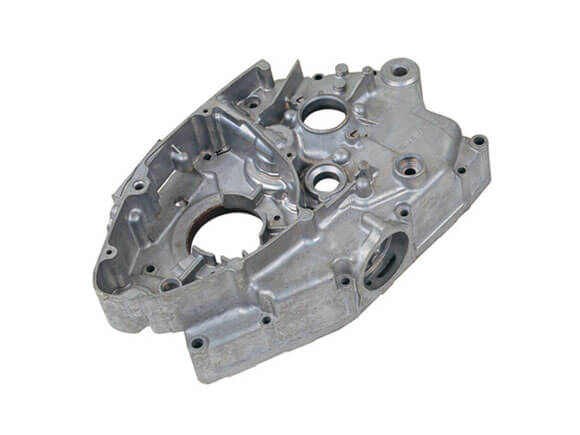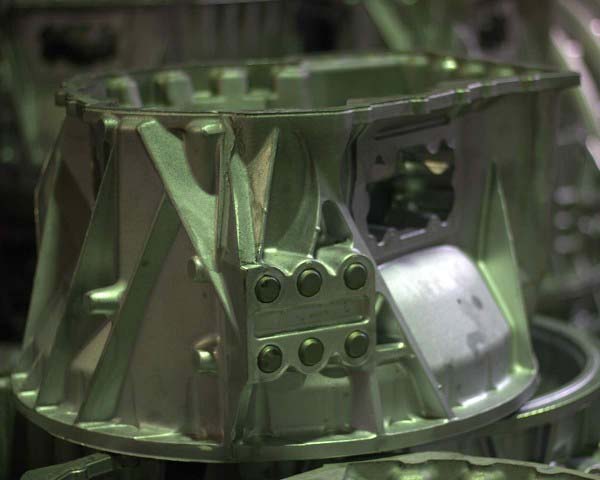The importance of Aluminum Foundry expertise in modern manufacturing processes
Wiki Article
The Value of Light Weight Aluminum Spreading in High-Quality Manufacturing Techniques
Light weight aluminum spreading has become a cornerstone in top notch manufacturing strategies. Its light-weight buildings and remarkable strength make it a recommended selection for different sectors. Suppliers take advantage of its style flexibility and minimal waste generation. As the need for sophisticated products grows, comprehending the subtleties of light weight aluminum casting becomes essential. This exploration reveals not only its benefits yet additionally the developing innovations that shape its future in production. What exists in advance for this ingenious process?
The Benefits of Light Weight Aluminum Spreading
Although different casting approaches exist, light weight aluminum spreading stands out due to its numerous advantages. One of the key benefits is its light-weight nature, which substantially minimizes transportation prices and energy consumption in applications. Light weight aluminum additionally exhibits outstanding deterioration resistance, making it excellent for lasting parts in diverse environments. The casting procedure allows for intricate designs, making it possible for producers to create complex forms with high accuracy and minimal waste. Additionally, light weight aluminum has exceptional thermal and electrical conductivity, making it ideal for a series of industrial applications. The high strength-to-weight ratio boosts the architectural stability of cast products, giving sturdiness without the added mass. Light weight aluminum casting can be adapted to various strategies, such as sand spreading or pass away casting, which broadens its applicability throughout sectors. In general, these benefits position aluminum spreading as a recommended choice in contemporary production, adding to effectiveness and sustainability.Trick Applications of Aluminum Casting
Aluminum casting discovers substantial applications across various markets due to its helpful buildings. In the automobile market, it is commonly made use of for producing engine blocks, transmission instances, and wheels, advertising lightweight styles that boost fuel performance. The aerospace industry likewise takes advantage of light weight aluminum casting, where components such as brackets and housings are produced to fulfill strict weight and toughness requirements.Furthermore, the electric field employs light weight aluminum spreading for creating real estates and heat sinks, which are crucial for efficient thermal administration in electronic gadgets. Aluminum Casting Company. The construction market uses light weight aluminum spreadings for building components, window frameworks, and components, adding to both aesthetic appeals and toughness
The customer products industry includes light weight aluminum casting in items like cookware and showing off devices, leveraging the product's stamina and corrosion resistance. On the whole, the convenience of aluminum spreading makes it a crucial procedure in meeting varied production requires across numerous fields.
The Process of Light Weight Aluminum Casting
Casting aluminum includes several distinct actions that transform basic materials right into ended up parts. The process starts with melting aluminum in a furnace, getting to temperatures around 660 levels Celsius. Once melted, the liquid light weight aluminum is put into a mold, which takes the form of the wanted element. Various mold and mildew kinds, consisting of sand, long-term, and financial investment molds, are made use of depending upon the application.
After putting, the aluminum cools down and strengthens, developing a harsh casting. This casting undertakes a series of completing procedures, such as machining, to achieve accurate measurements and surface high quality. Quality assurance steps are applied throughout to ensure the stability and toughness of the final product. As soon as all processes are total, the ended up light weight aluminum components await numerous applications, showcasing the flexibility and performance of light weight aluminum spreading in manufacturing methods. Each action is essential in attaining high-quality results, making this procedure crucial in making sectors.
Technologies in Light Weight Aluminum Spreading Innovation
Current developments in aluminum casting modern technology have actually transformed manufacturing procedures substantially. Advancements such as advanced casting techniques, combination of smart production, and sustainability methods are reshaping the industry. These growths not just improve effectiveness but additionally address ecological issues, paving the means for a much more lasting future in aluminum casting.Advanced Spreading Methods
As makers look for greater performance and sustainability in manufacturing, cutting-edge innovations in light weight aluminum spreading technology have actually arised to meet these needs. Advanced casting methods, such as die spreading, investment spreading, and sand casting, have actually been refined to improve precision and lower waste. Pass away casting permits faster production prices and tighter resistances, making it optimal for high-volume things. Investment spreading, recognized for its capacity to generate complicated geometries, enables detailed designs with premium surface coatings. Sand casting stays preferred for its convenience and cost-effectiveness, specifically in low-volume applications. These techniques not only improve the quality of light weight aluminum elements however additionally contribute to lowered energy usage, aligning with industry goals for lasting practices in producing processes.Smart Manufacturing Combination
Just how can clever manufacturing assimilation transform light weight aluminum spreading technology? By integrating sophisticated technologies such as the Web of Points (IoT), expert system (AI), and information analytics, smart manufacturing boosts efficiency and precision in light weight aluminum spreading processes. Real-time monitoring of devices and manufacturing lines enables instant modifications, reducing waste and downtime. Predictive maintenance powered by AI minimizes devices failings, making sure regular quality. Furthermore, data analytics can enhance casting layouts and specifications, bring about better product use and decreased cycle times. These innovations promote smooth interaction in between drivers and machines, cultivating a much more nimble production atmosphere. On the whole, wise production assimilation significantly boosts the capabilities of aluminum casting, advertising higher high quality outputs and even more responsive manufacturing techniques.Sustainability Advancements
While the aluminum casting industry encounters enhancing pressure to adopt lasting techniques, advancements are emerging that noticeably lower its ecological impact. Advanced recycling strategies now enable manufacturers to utilize approximately 95% recycled light weight aluminum, significantly lowering power usage and waste generation. On top of that, the integration of low-emission modern technologies, such as electric melting furnaces, decreases greenhouse gas discharges connected with conventional casting techniques. Additionally, the advancement of environmentally friendly finishings and binders replaces dangerous chemicals, improving workplace safety and security and minimizing environmental air pollution. These developments not just line up with global sustainability objectives but likewise improve the general performance and high quality of light weight aluminum items. As the sector progresses, these advancements will certainly play a necessary role in promoting a much more lasting future for aluminum casting.Comparing Light Weight Aluminum Casting With Various Other Approaches
In comparing aluminum casting with other producing approaches, numerous vital variables arise. Cost durability, efficiency and toughness, and design versatility serve as essential metrics for assessment (Precision aluminum casting). Evaluating these aspects can provide insights into the advantages and constraints of aluminum casting in numerous manufacturing contextsPrice Performance Evaluation
Price performance stays an extremely important factor to consider in manufacturing processes, specifically when reviewing aluminum spreading against alternative techniques. Light weight aluminum casting typically presents a reduced first financial investment contrasted to methods such as steel forging or machining, which require more elaborate and pricey equipment. In addition, light weight aluminum's lightweight nature can decrease transportation prices and energy consumption throughout production. The ability to create intricate forms with minimal waste further boosts its cost-effectiveness, as much less material is thrown out throughout the manufacturing process. Additionally, light weight aluminum casting generally permits quicker production cycles, bring about reduced labor prices and faster turnaround times. To sum up, when comparing price efficiency, light weight aluminum spreading often becomes a favorable choice, offering suppliers monetary benefits along with top notch result.Strength and Durability
Strength and toughness are critical aspects when evaluating manufacturing approaches, particularly in the context of aluminum spreading. Compared to various other methods such as plastic shot molding and steel manufacture, aluminum spreading uses distinct advantages. The fundamental homes of light weight aluminum, incorporated with the spreading procedure, lead to light-weight yet durable parts that can stand up to significant stress and anxiety and ecological aspects. Unlike plastics, which may deteriorate in time, light weight aluminum preserves its integrity and performance under high temperature levels and stress. In addition, while steel parts can be heavier and prone to corrosion, aluminum withstands rusting, improving durability. This combination of stamina and durability makes aluminum casting a recommended selection for sectors calling for dependable performance in demanding applications, such as automobile and aerospace industries.Style Versatility Comparison

The Future of Aluminum Casting in Production
How will innovations in innovation form the future of aluminum casting in production? The integration of automation and fabricated intelligence is anticipated to reinvent aluminum spreading procedures. These innovations can enhance accuracy and efficiency, minimizing waste and production expenses. In addition, the development of 3D printing strategies allows for quick prototyping and customized styles, making it possible for manufacturers to react promptly to market demands.Sustainability is additionally an essential focus, with innovations intended at lowering energy usage and reducing environmental effect. Techniques such as die casting and financial investment spreading are evolving to incorporate recycled aluminum, advertising a round economic situation.
In addition, improvements in products scientific research might lead to the advancement of lighter, stronger aluminum alloys that might increase the applications of aluminum casting across numerous sectors. Overall, the future of aluminum casting in manufacturing will likely be defined by boosted effectiveness, versatility, and sustainability, placing it as an important part of modern-day manufacturing methods.
Frequently Asked Questions
How Does Light Weight Aluminum Spreading Effect Environmental Sustainability?
Aluminum spreading favorably affects environmental sustainability by advertising recycling, lowering power usage contrasted to various other metals, and lessening waste. Its light-weight homes also lead to reduce emissions throughout transportation, supporting greener techniques in various sectors.What Are the Price Ramifications of Aluminum Spreading?
Aluminum spreading commonly involves greater initial prices because of material and handling expenses. Nonetheless, its longevity and lightweight homes can generate lasting financial savings by minimizing maintenance and transportation prices, eventually balancing the financial effects for producers.Can Light Weight Aluminum Spreading Be Recycled Efficiently?
Aluminum casting can be recycled effectively, as the product preserves its buildings throughout the reusing procedure. This allows for the production of top quality parts while get more info minimizing waste and reducing energy consumption related to brand-new light weight aluminum manufacturing.What Precaution Are Needed Throughout Aluminum Spreading?
Safety and security measures during aluminum spreading consist of making use of individual safety tools like handwear covers and safety glasses, making sure appropriate air flow, keeping tools, and adhering to procedures for handling liquified steel to protect against burns, breathing threats, and various other potential accidents.
Just How Does Aluminum Spreading Affect Product Design Flexibility?
Aluminum casting enhances product style versatility by allowing complex forms and light-weight structures. This method enables designers to explore innovative setups, resulting in versatile applications throughout numerous markets while keeping stamina and toughness in the end products.Aluminum casting can be adjusted to different methods, such as sand casting or die spreading, which expands its applicability across industries. As soon as all procedures are complete, the finished aluminum parts are prepared for various applications, showcasing the flexibility and efficiency of aluminum spreading in production techniques. As manufacturers look for higher efficiency and sustainability in manufacturing, ingenious improvements in aluminum spreading innovation have arised to meet these needs. Unlike plastic shot molding, which may require substantial tooling adjustments for layout modifications, light weight aluminum casting can accommodate alterations much more conveniently throughout the manufacturing cycle. Developments in products scientific research may lead to the advancement of lighter, stronger light weight aluminum alloys that could increase the applications of aluminum casting throughout various markets.
Report this wiki page